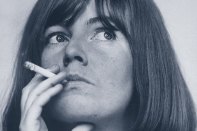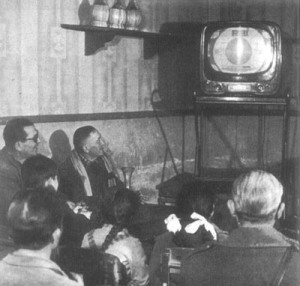 I finished reading Edna O’Brien’s Country Girl on the plane back to Milan last week. Considering how much the memoir is bound up with place, spiralling out from rural Clare to Dublin, London and further afield and coming back again (sort of) to Ireland, it seemed fitting to be reading it while on my own travels. Having read a couple of the original Country Girls novels a few years ago, I was really curious to read the book for the insights it might offer into living in 1950s Ireland. Edna O’Brien was also born in 1930, her life spanning the same years as my ‘post-war generation’ of Italians coming of age in the 1950s, although Ireland was quite a different place to Italy, with its experience of economic boom and rapid social change in the late 1950s and 1960s.
I finished reading Edna O’Brien’s Country Girl on the plane back to Milan last week. Considering how much the memoir is bound up with place, spiralling out from rural Clare to Dublin, London and further afield and coming back again (sort of) to Ireland, it seemed fitting to be reading it while on my own travels. Having read a couple of the original Country Girls novels a few years ago, I was really curious to read the book for the insights it might offer into living in 1950s Ireland. Edna O’Brien was also born in 1930, her life spanning the same years as my ‘post-war generation’ of Italians coming of age in the 1950s, although Ireland was quite a different place to Italy, with its experience of economic boom and rapid social change in the late 1950s and 1960s.
The early chapters on growing up as a child in 1930s and 1940s Ireland gave a real sense of a middle-class rural existence in the late 1930s and early 1940s, from the idyllic childhood memories of the countryside to the social claustrophobia of small town Ireland in the 1940s. The convent school that Edna O’Brien attended as a boarder is also described as a curiously self-contained world with its own peculiar rules, customs and lexicon. The descriptions of life as a young woman in 1950s Dublin were fascinating too; Edna began her career as a writer by writing a weekly column on Dublin’s social scene for a trade magazine, and the extracts she quotes from here offer some sense of Dublin’s more vibrant, fashionable side, as well as the stagnant and heavily Catholic atmosphere of 1950s Ireland which has by now become cliché. Edna O’Brien manages to give a sense of what it was live to actually live in this sort of society; to want to keep up with a changing wider world and yet find it difficult to completely let go of her inherited beliefs. The story of how she met and married her husband Ernest Gebler – causing scandal in her own family since he was already married – is a familiar one as she borrowed heavily from her own autobiography for the plots of her early novels. However the memoir gives a sense of what motivated her to write the way she did, beginning her career as a novelist in the early 1960s, while a young mother in London and looking back at her life in Ireland.
The later sections of the book were weaker, for me. The account of her life as an intellectual socialite in late 1960s and 1970s London seemed to descend into an exercise in celebrity name-dropping – if there is a single famous person who passed through London in the 1960s and failed to get a mention, they are probably feeling pretty left out by now! By the final sections, the narrative was getting increasingly fragmented and meandering too.
However, Country Girl did offer some real insights into its time and places, giving some sense of what it was like to grow up and come of age in 1940s and 1950s Ireland, and to life an unconventional life as a woman, intellectual and writer. For me, since I am studying memoirs for my own research on Italy, it also made me think about memory, subjectivity and self in autobiographical writing; the slippery ways in which these work and the importance of place to memory and identity.




